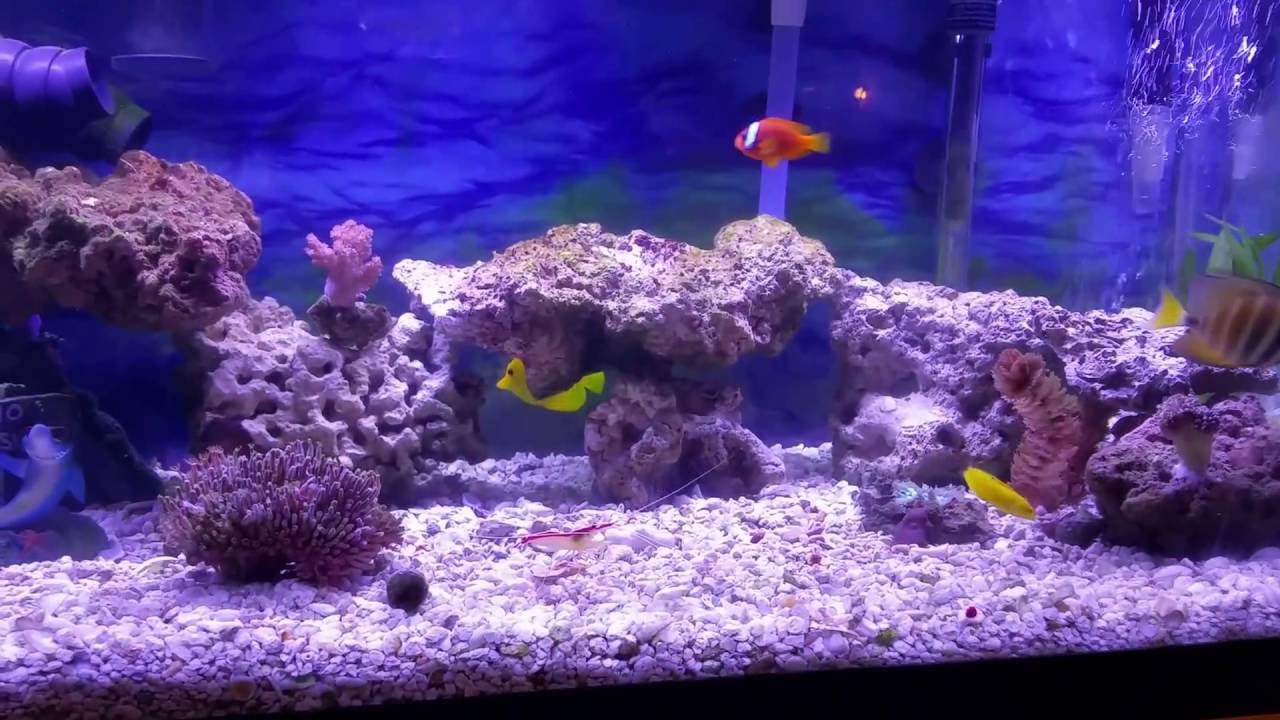Saltwater Tank Substrate or Sand
In the article I’m going to tell you about Saltwater Tank Substrate or Sand.

Contents
Choosing the Right Substrate
There are various types of substrate that can be used when setting up your marine ecosystem. The most important point is that sand is natural, your tank inhabitants will feel at home among the sand. Sand is also more esthetically pleasing then gravel.
What type of sand should I get?
Choosing the right sand is a big decision some sands have no impact on your water chemistry but others have a big impact. Some sands can help with king Kh and pH in check. If you are not sure about what type of sand you ended up getting it would be best to test it before filling your aquarium with it.
It is fairely easy to check the water chemistry of your sand, you simply place it in a container with water and allow it to sit for a few days, after it has had time to site you simply test your water parameters. It is best to test your water paramaters before adding the sand and then again after you have added sand and it has had a chage to sit. You can then judge accordingly on whether or not the sand you have will be suitable for your aquarium.
Silica Based Sands
Play Sand
This is a common type of sand that people put In their tanks, it is readily available and fairly cheap. It is also known as silver sand. While this is fairly common aquarium sand, it can create an excessive amount of algae growth.
Blasting sand
This type of sand is used in the sand blasting industry, it is cheap and generally has a very fine grain sand.
Black Beauty Sand
Also used by the sand blasting industry, but is not a naturally occurring type of sand, it comes from powered iron. This can and will change your water chemistry, and the iron slag can have sharp edges that will hurt your burrowing inhabitants.
Coral Sand
This is also known as Crushed coral (CC), it is made from coral, and can be very good at maintain the correct pH and keeping the water hardness high. This is generally more expensive type substrate then silica sand and is generally white, with mixed grain sand. It seems that crushed coral substrates are beginning to become sort of an “old school” thing to use, it still can have many benefits, in maintaining water chemistry and some disadvantages when it comes to colleting detritus and not being the greatest for burrowing tropical fish.
Aragonite
This has become the new “norm” within the aquatic community. It comes in a variety of different colors and grain sizes. Aragonite sand can help control pH value and water hardness within your aquarium.
What is Live Sand? And why do I need it?
Live sand is sand that is collected from the ocean, or “not live” sand that is cultured with bacteria to make it live. The key to live sand is the bacteria that is living within it. Live sand can be the basis for your biological filter.
All sand over time will become alive with bacteria, it is not required to start your tank out with live sand, and some might say that it is a waste of money, because you can purchase cheap sand such as play sand.
One good benefit to live sand is that you dont have to wash it, and more then likely there will be a signifigantly smaller amount of dust when you add it to your aquarium. This will also lead your aquarium to clear sooner.
//www.youtube.com/watch?v=vvtvFLKoUP4



